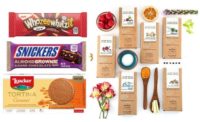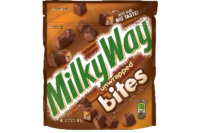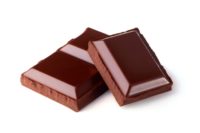These days you can grab a chocolate bar with almost anything inside. In the past year companies have introduced flavors ranging from marshmallows to ginger to hemp seeds.
Taking a step back though, chocolate bars are only as good as the chocolate industry as a whole. And the good news is, it seems to be a good time to be a chocolatier.
U.S. chocolate sales increased again in 2013, according to a report from Mintel, “Chocolate Confectionery - US.” Overall, they grew 24 percent from 2008-2013.
As for the future, Mintel forecasts that chocolate sales will increase another 14 percent from 2013-2018.
“The category benefits from an engaged consumer base,” Mintel says. “It’s viewed as an affordable indulgence, and maintained strong engagement among its users through the economic downturn, and into the period of recover.”
But who specifically is buying all this chocolate?
It seems younger consumers are actually more likely than average to buy and eat chocolate, because of a combination of factors, including: the likelihood that consumers 35-44 years old have kids who eat chocolate and the fact that older consumers are more likely to have to limit their chocolate intake because of health concerns.
And it’s not just older consumers who have concerns. Things aren’t quite as sweet as they could be, as the category’s growth is expected to be slower than in the past. That’s in part because many consumers are now avoiding chocolate altogether because of health concerns.
Add to that the fact that the market is so saturated with competing products, and the fact that there’s just more snack options out there in general and things look even more bleak.
There is good news for those in the chocolate bar business, though.
The bars, bags and boxes of chocolate weighing less than 3 ounces leads the segment in sales and growth. In fact, it’s driving the category, maintaining a 40.7 percent share, and a dollar sales growth of 28 percent from 2008-2013. Meanwhile, gift box and sugar-free chocolate sales struggled in 2013.
And, nearly 9 out of 10 adults purchase chocolate from themselves or others in their home. Specifically, 86 percent of adults purchase chocolate, and 74 percent eat it.
“This is a strength of the category, implying an engaged audience with a vast array of interest, tastes and needs,” Mintel reports. “However, it also suggests that little growth can come from adding new consumers to the market.”
In other words, sales growth will have to come from getting current consumers to increase their spending. And capitalizing on snack trends, and appealing to consumers interest in healthy and convenient foods.
New flavors are a must:
Here’s where mainstream chocolate makers have really shined. They continue to innovate and introduce new chocolate bars to the market.
And there’s no denying that a few large companies control most of the category. In 2013, the top five chocolate companies sold about 88 percent of the chocolate, up from 87 percent in 2012, Mintel reports.
The category is dominated by The Hershey Co., with 41 percent of the market, followed by Mars Inc., with 29 percent of the market. Nestle is in a distant third, with 6 percent of the market, followed by Lindt and then Russell Stover.
The top five have continued to innovate, albeit usually through line extensions.
For example, Nestlé recently introduced Butterfinger Peanut Butter Cups, which transforms the classic candy bar into peanut butter cups. Each cup features a smooth, super peanut-buttery Butterfinger filling with just the right amount of crunchy pieces mixed in, all surrounded by delicious milk chocolate. A 1.5-oz. single pack with two cups has a suggested retail price of $0.89-$1.19.
Then there’s Mars, which in the last year has introduced a new Snickers Rockin Nutroad bar. And, the company extended its Milky Way brand with a new Milky Way French Vanilla bar.
The company also introduced its new M&M’S Chocolate Bar. Made with the best quality, creamy, smooth milk chocolate and the colorful candy fun of the M&M’S brand. A single, 1.5-oz. bar has a suggested retail price of $1.09.
Consumers want lower prices
Even with all those delicious new inexpensive mainstream chocolate bars, companies still have to watch their prices.
While it’s become common knowledge throughout the recession that consumers are willing to splurge a little on a good piece of chocolate, because it’s such a delicious affordable luxury, that doesn’t mean they aren’t paying attention to prices.
Forty-three percent of chocolate buyers say they would actually trade down to lower-priced chocolates if the price of the products they typically buy increased by 25 percent.
What’s more, 21 percent of consumers said they would buy less chocolate altogether if hit with such an increase.
“The industry will need to carefully assess options for dealing with rising commodities costs resulting from cocoa shortages,” Mintel says.
Data like that likely weighed heavily on Hershey’s mind recently when the company announced that it would be increasing its wholesale costs 8 percent for all of its candy.
The company says the increases are a result of Hershey’s higher input costs, including more expensive raw materials, packaging, fuel, utilities and transportation.
“Over the last year, key input costs have been volatile and remain at levels that are above historical averages,” says Michele G. Buck, president, North America, The Hershey Co. “Commodity spot prices for ingredients such as cocoa, dairy and nuts have increased meaningfully since the beginning of the year. Given these trends, we expect significant commodity cost increases in 2015.”
Mars also recently announced a 7 percent price increase, and Nestle said it will be raising its prices as well.
Premium bars continue to thrive
Price increase fears haven’t scared away the premium chocolatiers though. High-end companies have continued to introduce new products, such as Theo — the first organic and Fair Trade chocolate factory in the country. The company recently introduced its Jacobsen’s Sea Salt Caramel Collection, which combines premium ingredients with delicious flavor combinations.
The bars, which have a suggested retail price of $11.99, were inspired by Theo’s proximity to the sea and the flavors of the Pacific Northwest. The four-piece collection doesn’t just include flavored caramels, but features flavored salts as well.
Specifically, the collection includes:
- Citrus Caramel with Jacobsen Lemon Salt
- Lemongrass Curry Caramel with Jacobsen Pinot Blanc salt
- Verjus Caramel with Jacobsen Pinot Noir Salt
- Mesquite Caramel with Jacobsen Cherrywood Smoked Salt
The company also recently introduced 70 Percent Dark Chocolate Classic Bars, Raspberry and Ginger, which retail for $3.99.
The flavors were chosen after the help of several rounds of voting on Facebook. The raspberry bar offers a fruity zest while the ginger bar is sweet and spicy. Both are 70 percent dark chocolate and available in stores and online. All Theo products are non-GMO certified and both of the new Classic Bars are suitable for vegans.
Then there’s L.A. Burdick Chocolate, which introduced its Single Source Bar Collection. The name of the collection comes from the single source chocolate the bars are made of, and they sell from anywhere between $9 and $62.
Created exclusively from a variety of regional beans where conditions are ideal for growing cocoa, the goal of the bars is to provide chocolate tastes from around the world.
From the fruity acidic notes of Madagascar, to the complex flavors of Grenada, these bars provide a world tour of regional chocolate tastes.
The collection includes seven individually wrapped bars made from beans from Bolivia, Peru, Grenada, Brazil, Madagascar, Venezuela and Ecuador.
And even the Kohler Co., known mostly for manufacturing kitchen and bath plumbing products, is in on the chocolate bar business, debuting a new Chocolate Bar Collection. The 1.5-oz. bars are available in six flavors: Milk and Dark Chocolate, Hazelnut Crunch, Mint, Cherry Almond and Peanut Butter.
The line underwent a complete transformation, improving the recipes and packaging. For example, the new Peanut Butter Chocolate Bar includes a filling of natural creamy peanut butter, a hint of sea salt and a dash of milk and dark chocolate — encased in a perfect blend of a milk chocolate shell.
There’s also Askinosie Chocolate’s incredibly innovative line CollaBARation bars, where each chocolate bar is made in collaboration with another brand. One of its newest bars, Dark Chocolate + Toasted Hemp Seeds was created in collaboration with Austin-based hemp purveyor, Happy Hemp, and it’s the sixth bar in Askinosie Chocolate’s CollaBARation line.
The company partnered with Tara Miko Grayless, founder of Happy Hemp, one of the few hemp importers in the country, who advocates the benefits of this “super food.”
“We all know how healthy dark chocolate is for you and when you add our hemp seeds — which are organic, protein-rich, and full of essential vitamins, minerals, and amino acids — this bar is all the pleasure minus the guilt,” says Grayless. “The flavor is exceptional, but it’s also still a really healthy treat.”
This chocolate bar blends creamy and fruity dark chocolate with slightly crunchy and perfectly toasted hemp seeds, making a fun and healthful snack.
As long as companies continue to create such new and unusual flavor combinations, there’s no doubt that the chocolate bar category will continue to be riding high for quite some time.












